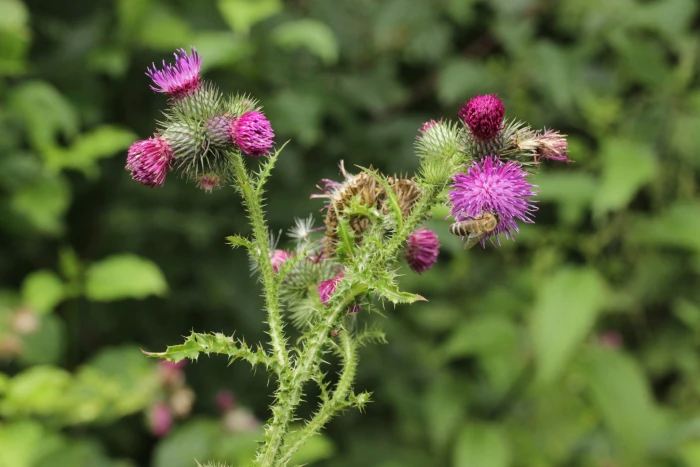Curly Plumeless Thistle
(Carduus crispus)
Curly Plumeless Thistle (Carduus crispus)
/
/

bjoerns
CC BY-SA 4.0
Image By:
bjoerns
Recorded By:
Copyright:
CC BY-SA 4.0
Copyright Notice:
Photo by: bjoerns | License Type: CC BY-SA 4.0 | License URL: http://creativecommons.org/licenses/by-sa/4.0/ | Rights Holder: bjoerns | Publisher: iNaturalist | Date Created: 2020-07-18T14:18:37-07:00 |

























Estimated Native Range
Climate Requirements for Leominster, Massachusetts
| This Plant | Your Site | Plant Suitability for Your Location | ||
|---|---|---|---|---|
| • Precipitation | 4" - 131" | 46" | Aquatic | Aquatic |
| • High Temp. | 47°F - 104°F | 82°F | Your summer temperatures are normal for this plant. | Excellent |
| • Low Temp. | -52°F - 58°F | 13°F | Your winter temperatures are normal for this plant | Excellent |
This plant may not grow well at your location - your precipitation is too high.
Summary
Carduus crispus, commonly known as curly plumeless thistle, is a biennial herb that is native to Europe and Asia but has become naturalized in various regions of North America. It typically grows up to 3 feet tall and thrives in a range of habitats, including meadows, fields, and disturbed areas. The plant has a distinctive appearance with wavy, spiny leaves that feature a woolly white underside. From May to July, it produces showy pink to purple disk-shaped flowers that are attractive to pollinators but can be a nuisance due to its invasive nature.
Curly plumeless thistle is known for its resilience and can be a problem in pastures and natural areas due to its aggressive growth and tendency to form dense stands. It prefers full sun and can tolerate a variety of soil conditions, although it is often found in areas with poor, compacted soil. In cultivation, it is not commonly used due to its invasive potential and spiny foliage. Gardeners should be cautious and consider the ecological impact before planting. It is often controlled through mechanical removal or herbicides.CC BY-SA 4.0
Curly plumeless thistle is known for its resilience and can be a problem in pastures and natural areas due to its aggressive growth and tendency to form dense stands. It prefers full sun and can tolerate a variety of soil conditions, although it is often found in areas with poor, compacted soil. In cultivation, it is not commonly used due to its invasive potential and spiny foliage. Gardeners should be cautious and consider the ecological impact before planting. It is often controlled through mechanical removal or herbicides.CC BY-SA 4.0
Plant Description
- Plant Type: Herb
- Height: 1.5-3 feet
- Width: 1-2 feet
- Growth Rate: Rapid
- Flower Color: Purple
- Flowering Season: Summer
- Leaf Retention: Deciduous
Growth Requirements
- Sun: Full Sun
- Water: Medium
- Drainage: Medium, Fast
Common Uses
Bird Garden, Erosion Control
Natural Habitat
Native to Europe and Asia, naturalized in North America, and typically found in meadows, fields, and disturbed areas
Other Names
Common Names: Welted Thistle, Curly Plumeless Thistle
Scientific Names: Carduus crispus, Carduus crispus var. albus, Carduus crispus var. crispus, Carduus crispus var. microcephalus, Carduus personata subsp. agrestis
GBIF Accepted Name: Carduus crispus